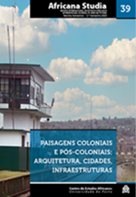The «Plan of Constantine» and the modernist utopia
Abstract
The city of Algiers experienced during the Algerian war a disproportionate increase of bidonvilles. This term, which was firstly used in the Maghreb in the late 30’s (Descloitres, 1961), represented the living conditions of the poorest indigenous populations. At CIAM 9 of 1953, ClAM-Algiers group made a remarkable presentation of the bidonville Mahieddine. By representing Algerian silhouettes through the Modulor, the goal was to seek in the vernacular and popular culture a way to renew modernity (Abram, 1999). This meticulous work gave birth to a sketch of the Muslim home cell. The latter was tested and experimented in various applications but had its climax through the housing programs of the “Plan of Constantine”. In this paper, we will try to understand how urban processes shape the territory and how this Plan dating from 1958 participated in the mutation of the Algerian landscape through the social housing experimentation carried out principally by the modern movement architects.
Keywords: Social housing, Grands Ensembles, Industrialization, CIAM 1953.
Downloads
Downloads
Published
How to Cite
Issue
Section
License
Copyright (c) 2024 Africana Studia

This work is licensed under a Creative Commons Attribution-NonCommercial 4.0 International License.
Copyrights of all published material belong to Africana Studia.
Original images supplied by authors will be returned to them if requested


